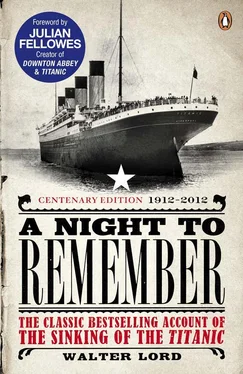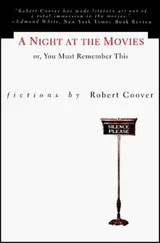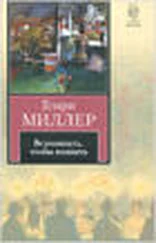When he mentions it at all, Lord portrays the world outside the Titanic as a very stable one, only ended in later years by war and taxation, but it is worth remembering that Britain was in turmoil at the time, with militant suffragettes, very bitter strikes and Ireland on the verge of rebellion. Nevertheless, Lord convinces us that the social order was maintained on board the ship, as stewards and valets helped their masters prepare for the lifeboats. And the sacrifice of third-class passengers went largely unchallenged by the inquiries in Britain and the United States. Lord tells many individual stories of heroism and cowardice, selfishness and generosity. The band did indeed play on, though not, apparently, ‘Nearer My God to Thee’. Lord tells how Bruce Ismay bullied his way into a lifeboat, only to live the next twenty-five years in loneliness and shame.
The interaction between Europe and America had been one of the most dynamic factors in world history for four hundred years, and Lord’s story taps into that, in particular the links between Britain and the United States, with a common language. They had fought together undefeated in the recent war, and one was in the process of handing over the mantle of world power with a generally liberal reputation to the other. Practically all white Americans had ancestors who had emigrated in ships like the Titanic , and millions more had crossed the Atlantic both ways in wartime. Yet the era of the great liner was about to end. The Boeing 707 began its service in 1957 and for the first time it was more economical to cross by air. The liner had a slow death paralleling the Titanic herself, but regular scheduled transatlantic services had ended by 1973.
Today just as many people take to the seas in cruise ships but somehow they do not have the same mythology. Passengers’ motives might range from pure hedonism to intellectual discovery, but even at its best the modern cruise does not have the sense of purpose of the great liner bridging the old world and the new, the isolation of those aboard in a closed society for days at a time, the stark divisions by class. And, of course, voyaging today is much safer than it was a hundred years ago. Loss of life in the Costa Concordia disaster of 2012 was mercifully small, but even so there are echoes of the Titanic —scramble for lifeboats, apparent neglect of duty by those in authority and heroism by others.
The Titanic disaster was soon overtaken by far greater catastrophes as Europe moved into the First World War two years later—a technologically advanced, arrogant and class-ridden society steamed boldly into danger despite numerous warning signals. The public never forgot the Titanic , but thirty years of destruction and savagery seemed to overshadow it. For ten years after 1945 there was a great flood of war memoirs and novels, often made into highly successful movies such as The Cruel Sea and The Caine Mutiny .
There was a certain amount of reaction by the mid-fifties. Peacetime conscription in Britain and the United States had created a generation ready to laugh at all things military, as reflected in films such as Private’s Progress and television characters like Sergeant Bilko, which showed soldiers as essentially lazy and corrupt. The public was ready for new heroes and legends, or for older ones to be revived. Even so, as the New York Times reviewer commented in 1955, there were already fifty books on the Titanic disaster in the Library of Congress, including four novels and six books of verse. But none of them matched the immediacy and impact of Lord’s work.
The Titanic legend had another enormous boost in 1985 when Dr Robert Ballard announced his discovery of the wreck two miles under the Atlantic. Lord was sceptical about this when it happened. ‘At first I thought that the discovery might spoil some of the allure. Part of the spell seemed to depend on the great ship, still hauntingly beautiful in her final moments, disappearing beneath the sea forever. But soon it became clear that the discovery actually added to the mystique.’ The salvage revealed much about the technical details of the sinking, including the fact that the ship had broken in two close to the surface, and that the funnels had become detached one by one. It produced a great range of personal goods, salvaged by RMS Titanic Inc. These added little to the historical account, but they provided poignant and often emotional links with the past when they were shown in well-attended exhibitions around the world.
The third great Titanic revival came with James Cameron’s film of 1997. Since the publication of A Night to Remember , the ship has been represented in fiction far more than any other in history. Offstage, it is included in almost every novel set in the period when it is necessary to get rid of a character or two—most recently, the loss of family heirs was the starting point for the highly successful TV series Downton Abbey . If all the fictional characters on board the ship could be counted, they would far outnumber the real passengers and crew. If they had any weight, they might sink the vessel without any help from the iceberg. Cameron’s film relied heavily on Lord’s research for many of the incidents described, a tribute to the merit of his work. The hero Jack Dawson finds it a little too easy to cross from third class to first or to go to the extreme bow, where only the crew were allowed, but in general the film was quite accurate.
The Titanic story remains as a legend. Though Walter Lord did everything humanly possible to find the absolute truth, he always knew that it could never be achieved: ‘The best that can be done is to weigh the evidence carefully and give an honest opinion.’ This is true of all historic research, and it is a tribute to Walter Lord’s skill and honesty that his work is still influential and worthy of a reprint after more than half a century.
Brian Lavery,
National Maritime Museum, Greenwich
January 2012
In 1898 a struggling author named Morgan Robertson concocted a novel about a fabulous Atlantic liner, far larger than any that had ever been built. Robertson loaded his ship with rich and complacent people and then wrecked it one cold April night on an iceberg. This somehow showed the futility of everything and, in fact, the book was called Futility when it appeared that year, published by the firm of M. F. Mansfield.
Fourteen years later a British shipping company named the White Star Line built a steamer remarkably like the one in Robertson’s novel. The new liner was 66,000 tons displacement; Robertson’s was 70,000 tons. The real ship was 882.5 feet long; the fictional one was 800 feet. Both vessels were triple screw and could make 24–5 knots. Both could carry about 3,000 people, and both had enough lifeboats for only a fraction of this number. But then, this didn’t seem to matter because both were labelled ‘unsinkable’.
On 10 April 1912 the real ship left Southampton on her maiden voyage to New York. Her cargo included a priceless copy of The Rubáiyát of Omar Khayyám and a list of passengers collectively worth 250 million dollars. On her way over she too struck an iceberg and went down on a cold April night.
Robertson called his ship the Titan ; the White Star Line called its ship the Titanic . This is the story of her last night.
1. ‘Another Belfast Trip’
High in the crow’s-nest of the new White Star liner Titanic , lookout Frederick Fleet peered into a dazzling night. It was calm, clear and bitterly cold. There was no moon, but the cloudless sky blazed with stars. The Atlantic was like polished glass; people later said they had never seen it so smooth.
Читать дальше












